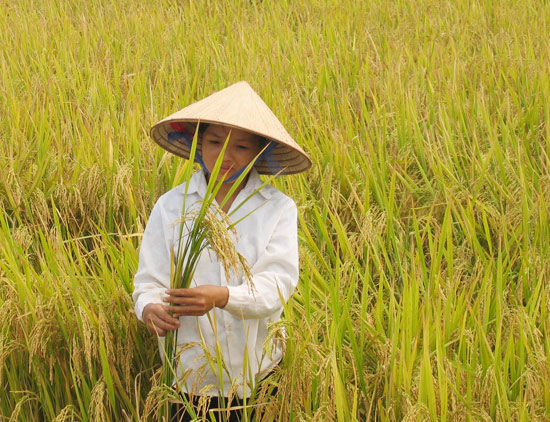New discovery about the origin of rice
On the latest issue of the Proceedings of the National Academy of Sciences (PNAS), a team of researchers found that rice may have first appeared about 9,000 years ago in China's Yangtze river valley. According to the results of a study of thousands of years of evolutionary history through large-scale rice sequence analysis .
Asian rice, Oryza sativa , is one of the oldest and very diverse crops with tens of thousands of varieties known worldwide. Two major subspecies of rice are japonica and indica that represent most of the world's rice varieties. Because rice is so diverse, its origin is the subject of many scientific debates. One theory is that indica and japonica have been domesticated from wild rice O. rufipogon. In contrast, one hypothesis suggests that these two rice subspecies were separately domesticated in different parts of Asia due to observations that the genetic differences between indica and japonica and the results of the relationship test Evolutionary system between pure rice varieties in India and China.

Images of Vietnamese rice fields prepare harvest season (Photo: IAEA.org)
In this study, the researchers used previously published data (suggesting that indica and japonica rice originated separately) and reevaluated the phylogeny of rice with more modern algorithms. Finally, they concluded that these two rice species have the same origin because they have a closer genetic relationship than any other wild rice species found in India or China .
In addition, the authors examined phylogenetic production of pure rice by rearranging 630 gene segments on chromosomes selected from a diverse set of wild and domesticated rice varieties using the previous model. used to review human evolutionary genetic data. The resulting data arrangement shows that the genetic sequence is consistent with a single source of rice. Scientists have also used a " molecular clock " of rice genes to determine the evolution of rice. Depending on how these molecular clocks are calibrated, the researchers determined the occurrence of rice grown probably from 8,200 years ago, while japonica and indica were about 3,900 years apart. The results of this study are consistent with archaeological studies suggesting that pure rice in the Yangtze River valley appeared about 8,000 to 9,000 years ago while pure rice in the Ganges region of India was about 4,000 years ago. .
According to Michael Purugganan, a biologist and co-author of the study, "when pure rice is brought by traders and farmers from China to India, it is likely to cross-breed with local wild rice. So , pure rice that we think originated in India actually had a beginning in China 'and' rice has a complicated evolutionary history along with humans and it followed them when they moved. across Asia ', said Barbara A. Schaal, Mary-Dell Chilton professor of biology at Washington University in St. Louis, who is also a co-author.
- Journey of domesticated water rice
- Looking for rice varieties
- China successfully researched 'sea rice', capable of raising 80 million people
- The journey of creating the best rice in the world by engineer Ho Quang Cua
- Successful restoration of rice varieties Bao thai Cho Don
- New rice varieties supplement nutrition for poor children
- Vietnam and IRRI cooperate to develop rice industry
- In fact, the rice cooker can split sugar in rice
- Why does rice for overnight change red?
- Pesticides are harming rice
- Gene helps increase rice yield and quality
- Taiwan successfully developed multicolored rice
 Why do potatoes have eyes?
Why do potatoes have eyes? 'Tragedy' the world's largest carnivorous life: Death becomes ... public toilet
'Tragedy' the world's largest carnivorous life: Death becomes ... public toilet Tomatoes were once considered 'poisonous' for 200 years
Tomatoes were once considered 'poisonous' for 200 years Detecting microscopic parasites on human face
Detecting microscopic parasites on human face